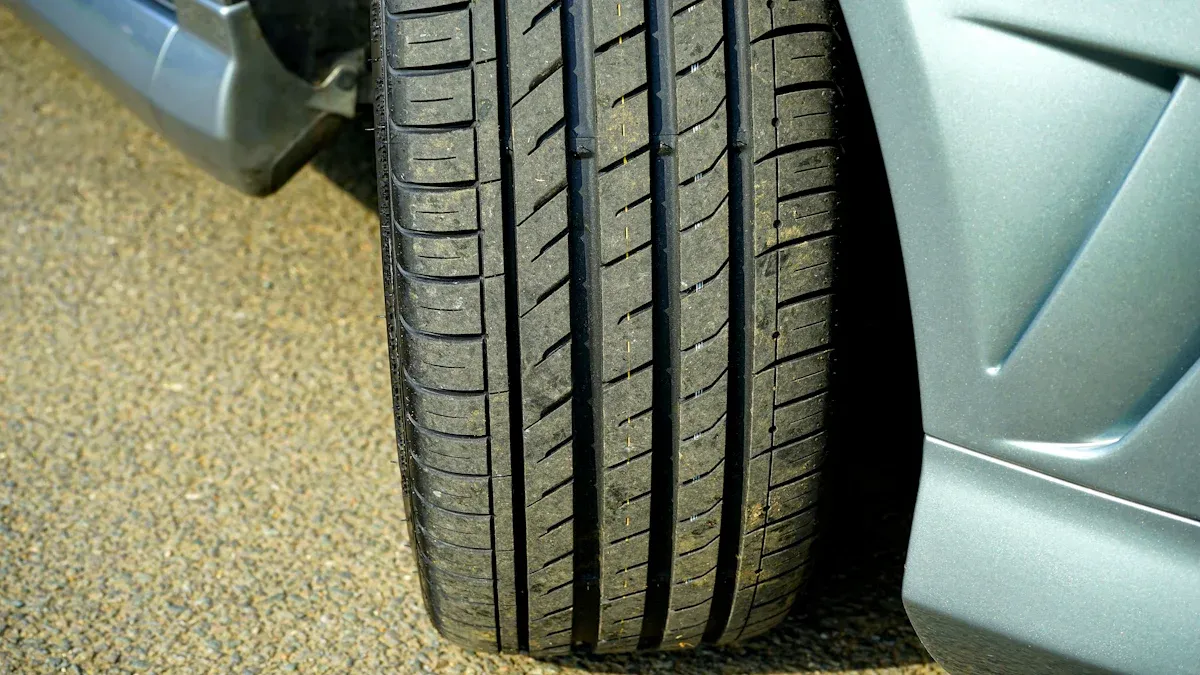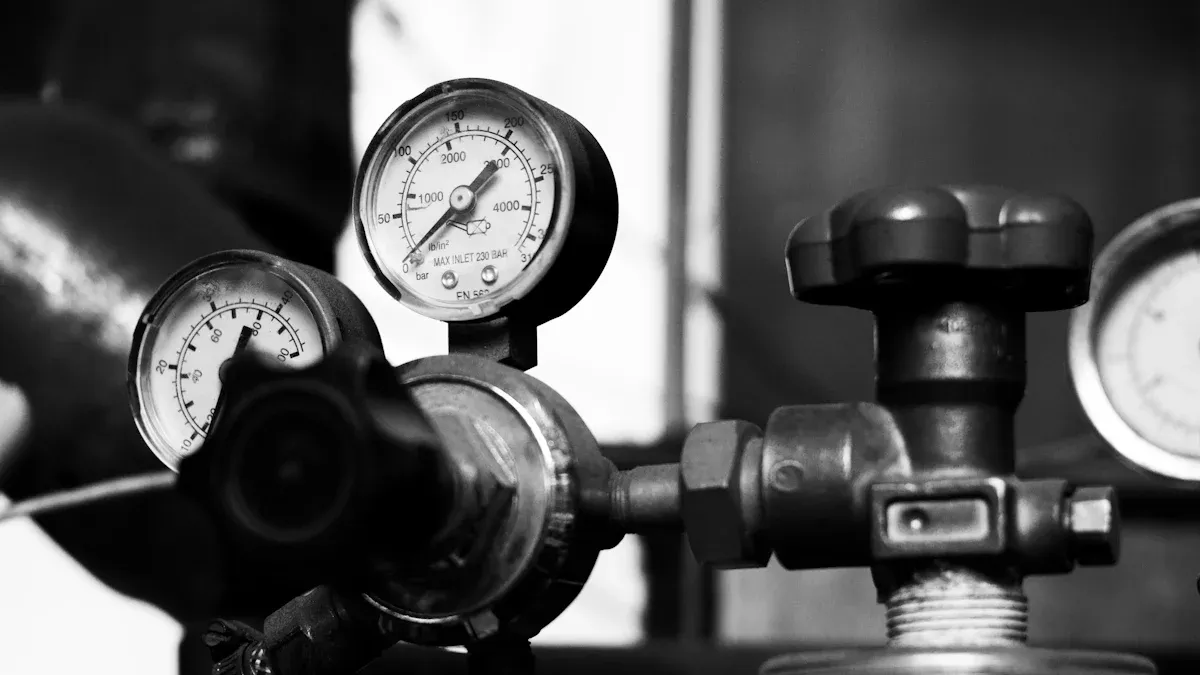
Tread checks are very important for vehicle safety. You need to know how rules change in different areas, which is why our Regional Law Round-Up is essential. Understanding these rules helps you follow the law and keep roads safe. If you drive in the EU, US, or AU, knowing the minimum tread check times is key. This information from the Regional Law Round-Up helps you make smart choices about taking care of your vehicle and staying safe.
Key Takeaways
Know the minimum tread depth for your region: EU requires 1.6 mm, US needs 4/32 inch for front tires, and Australia mandates 1.5 mm for passenger cars.
Regularly check your tire tread depth. In Australia, do this at least once a month to ensure safety and compliance.
Stay informed about local regulations. Each state in the US may have different rules, so check your local laws to avoid fines.
Keep proper records of your tire checks and maintenance. This helps you stay compliant and ensures your vehicle is safe on the road.
Replace tires before they reach the legal limit. Doing this improves grip and safety, especially in wet conditions.
EU Tread Check Regulations

Minimum Tread Depth
In the European Union, the minimum tread depth for truck tires is very important for safety. You need to make sure your tires meet this rule to avoid fines and keep roads safe. The law says the minimum tread depth is 1.6 mm. This rule is in many EU countries, like Germany. However, it is better to change your tires before they hit this legal limit. Doing this can greatly help your vehicle grip the road, especially when it’s wet.
Compliance Requirements
To follow EU tread check rules, you must keep proper records. Here are the important things you should have:
Your name and address, or those of any authorized representatives
A short description of the product
Identification of the product, like the product’s serial number
The name(s) and address(es) of the places involved in making the product
The name and address of any notified body that checks the product
A statement of the conformity assessment process that has been followed
The EU declaration of conformity
Label and instructions for use
A statement of relevant rules that the product follows
Identification of technical standards that the product meets
List of parts
Test results
As a commercial vehicle operator in the EU, you may face several compliance problems. Here’s a summary of the most common issues:
Compliance Challenge | Description |
|---|---|
Working and Rest Time Regulations | Drivers must follow strict rules about their working hours and required rest times. |
Use of Tachographs | Operators must use tachographs to track driving times and ensure they follow the rules. |
Periodic Training | Regular training is needed to keep drivers informed about compliance rules and regulations. |
Knowing these requirements helps you stay compliant and keeps your vehicle safe on the road. The Regional Law Round-Up gives you the insights you need to understand these rules well.
US Tread Check Regulations

Minimum Tread Check Frequency
In the United States, keeping the right tire tread depth is very important for safety. The federal rules say how deep the tread must be for different tires. For front tires, the tread depth must be at least 4/32 inch. For all other tires, it must be 2/32 inch.
You should check your tires often to make sure they meet these rules. Here are some important points about checking your tires:
Look for treadwear indicators.
Measure tread depth in different spots on the tire.
Make sure tires have no visible damage, like bulges or cuts.
The U.S. Department of Transportation (DOT) helps enforce these rules. The Federal Motor Carrier Safety Administration (FMCSA) and the Commercial Vehicle Safety Alliance (CVSA) check for compliance. They make sure vehicles on the road are safe.
Here’s a summary of the enforcement details:
Regulation Description | Enforcement Details |
|---|---|
Minimum tread depth for steer tires must be at least 4/32 inches | Enforced by FMCSA and CVSA |
Tires must be free from bulges, cuts, or damage | Enforced by FMCSA and CVSA |
Out of service conditions for tires with exposed ply or leaks | Enforced by FMCSA and CVSA |
State Variations
While federal rules set the basic requirements, each state can have stricter rules. Some states may need more frequent checks or have extra rules about tire care.
For example, states like California and New York have specific rules that might be different from federal ones. You should learn about your state’s rules to stay compliant.
Also, here are some recent updates to U.S. federal rules about tire tread checks:
The minimum tread depth for front tires must be at least four thirty-seconds of an inch.
For all other tires, the minimum tread depth is two thirty-seconds of an inch.
Tires should match in size and construction on the same axle.
Any visible damage, like chunking or bulges, is not allowed.
Knowing these rules helps you keep your vehicle safe and avoid fines.
When you compare U.S. rules with those of nearby countries, you’ll see similarities. Both Canada and Mexico also require a minimum tread depth of 4/32 inch for front tires and 2/32 inch for other tires.
Country | Minimum Tread Depth (Front Axle) | Minimum Tread Depth (Other Tires) |
|---|---|---|
United States | 4/32 inch | 2/32 inch |
Canada | 4/32 inch | 2/32 inch |
Mexico | 4/32 inch | 2/32 inch |
By staying updated on these rules, you can keep your vehicle safe and compliant on the road.
AU Tread Check Regulations
Tread Check Requirements
In Australia, you have to follow certain rules about tire tread checks. The minimum tread depth for passenger cars is 1.5 mm. For commercial vehicles, it is 1.0 mm. You should check your tires regularly to keep them safe and legal. It’s best to inspect your tires at least once a month. Look for wear and measure the tread depth with a gauge or a coin.
If your tires are below the legal limit, change them right away. Driving on worn tires can cause accidents and make it harder to stop, especially when it’s wet.
Comparison with EU and US
When you compare Australia’s rules with those in the EU and US, some big differences show up. For example, the EU requires a minimum tread depth of 1.6 mm for all vehicles. The US needs 4/32 inch for front tires and 2/32 inch for other tires.
Here’s a quick comparison of features across these regions:
Feature | AU Regulations | EU Regulations | US Regulations |
|---|---|---|---|
Minimum Tread Depth | 1.5 mm (passenger), 1.0 mm (commercial) | 1.6 mm | 4/32 inch (front), 2/32 inch (others) |
Frequency of Checks | Monthly | Varies by country | Regular checks recommended |
Penalties for Non-Compliance | Varies by country | Fines and vehicle out-of-service conditions |
In Australia, penalties for not following the rules can be serious. You could get fines from AUD 9,390 to AUD 16,500. You might also receive warnings or notices if you don’t report changes on time.
Knowing these rules helps you stay compliant and safe on the road. The Regional Law Round-Up gives you important information about these rules.
Comparative Analysis
Differences Summary
When you check the tread rules in the EU, US, and Australia, you see some big differences. The minimum tread depth changes by region. In the EU, it is 1.6 mm. In Australia, it is a bit lower at 1.5 mm for passenger cars. The US has its own rules. It needs 4/32 inch (about 1.6 mm) for front tires and 2/32 inch for other tires.
The checking frequency is also different. In Australia, you should check your tires at least once a month. In the EU, how often you check can change by country. The US suggests regular checks but does not give a strict schedule.
Here’s a quick summary of the minimum tread depth requirements:
Region | Minimum Tread Depth |
|---|---|
Europe | 1.6 mm (2/32 inches) |
North America | 1.6 mm (2/32 inches) |
Australia | 1.5 mm (0.059 inches) |
Similarities Summary
Even with the differences, there are similarities in the rules. All three areas stress the need to keep safe tread depths for vehicle safety. They all know that low tread depth can cause dangerous driving, especially in wet weather.
Also, international agreements like the Technical Barriers to Trade (TBT) affect these rules. This agreement helps make sure that technical rules are fair and do not block trade. It encourages regions to follow international standards, which helps keep safety rules consistent.
Agreement Name | Purpose |
|---|---|
Technical Barriers to Trade (TBT) | Makes sure that technical rules and standards are fair and do not block trade. It encourages members to follow international standards. |
Knowing these similarities and differences helps you understand the rules better. The Regional Law Round-Up gives you the information you need to stay safe and follow the law on the road.
Knowing the rules for tread checks in the EU, US, and Australia is very important for your safety while driving. Each area has different rules about how deep the tread should be and how often you should check it.
Tip: Check your tires often to make sure they follow the law. This habit keeps you safe and helps your vehicle work better.
Stay updated on local rules. This information helps you avoid fines and makes driving safer. Remember, keeping your tire tread in good shape can save lives.
FAQ
What is the minimum tread depth for tires in the EU?
In the EU, the minimum tread depth for truck tires is 1.6 mm. For passenger vehicles, it is also 1.6 mm. Always check your tires to ensure they meet this requirement.
How often should I check my tire tread depth in Australia?
In Australia, you should check your tire tread depth at least once a month. Regular checks help you maintain safety and compliance with the law.
Are there penalties for not following tread check regulations?
Yes, penalties vary by region. In Australia, fines can reach up to AUD 16,500 for non-compliance. Always stay informed to avoid such penalties.
Do tread check regulations differ by state in the US?
Yes, each state can have its own rules. Some states may require more frequent checks or additional regulations. Always check your local laws to stay compliant.
Why is maintaining proper tread depth important?
Proper tread depth ensures better traction, especially in wet conditions. It helps prevent accidents and improves overall vehicle safety. Regular checks can save lives!
See Also
The Importance Of Monitoring Tire Tread Depth For Safety
Understanding Smart Tire Tread Depth Detectors And Their Function






